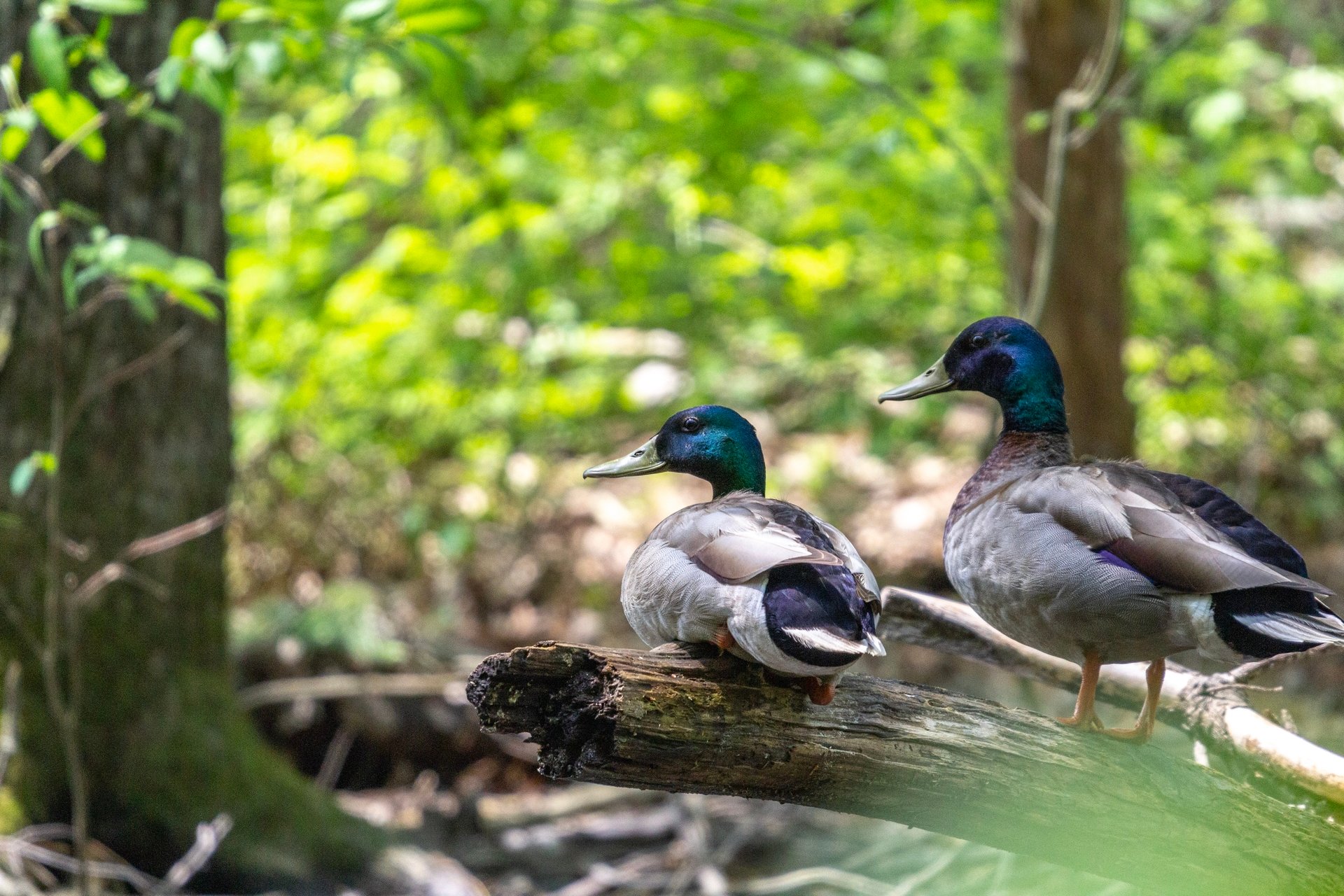Birds in Massachusetts
Don't Feed the Ducks
Giving food to ducks and geese (waterfowl) can create many problems for birds and the environment, and both Mass Audubon and the Massachusetts Division of Fisheries and Wildlife (MDFW) discourage it. The notion that waterfowl cannot survive without human intervention is false. Ducks and geese have survived for thousands of years without handouts and will continue to do so if left alone.
In 1973, H.W. Heusmann, a waterfowl biologist with the MDFW, conducted a study at six parks in Massachusetts between mid-August and mid-September. The data gathered during the 28-day period showed that 38,500 people fed 7,800 pounds of food to ducks, which roughly translates to 6,550 loaves of bread. Besides bread, the birds consumed crackers, donuts, pastry, popcorn, potato chips, pretzels, cookies, cereal, peanuts, and lettuce—a diet most people wouldn’t allow their children or pets to eat on a daily basis!
Reasons Why You Shouldn't Feed Ducks
1. Feeding Encourages Them to Stay Where They Shouldn't
Feeding attracts large concentrations of waterfowl to areas that can’t naturally support such numbers. Left on their own, ducks and geese will occupy areas that provide sufficient natural food. As they deplete food in one location, they fly to new feeding areas, often miles away. Mallards in Boston and the surrounding suburbs will readily relocate as far as Cape Cod to find open water and food.
2. Feeding Can Spread Disease Between Flocks
Artificial feeding encourages unnaturally large flocks to gather in one place where the competition for food can cause unnecessary stress. This may weaken the birds and make them more susceptible to disease. Also, birds crowded into these areas are defecating in the same location where they’re feeding.
3. Feeding Disrupts the Duck's Natural Life Cycle
Alternatively, artificial feeding may allow frail birds to survive, reproduce, and diminish the species as a whole. Mortality is normally high in bird populations—it’s a natural mechanism, important in maintaining populations that the environment can support.
4. Feeding Can Weakens Certain Species
Feeding may encourage species of waterfowl not normally found in the area to concentrate. This can lead to an increased incidence of hybridization, which can eventually weaken the gene pool in certain species. This is a rising problem in Mallard and Black Duck populations in Massachusetts.
5. Feeding Increases Risk to Human Health
Deposits of fecal matter can affect water quality and compromise human health. Children can also come into contact with droppings left on the surrounding landscape. Also, birds crowded into these areas are often defecating in the same location where they’re feeding.
Winter Survivors
Ducks and geese are well suited to survive New England winters. Their feathers provide air pockets that stabilize body temperature and control heat loss. When birds fluff their feathers, they are merely increasing the air space and insulation. Waterfowl sitting with puffed feathers on a frozen pond are perfectly fine and do not need our help.
Birds and the Law
All birds are protected by federal laws under the Migratory Bird Act of 1918, as well as by Massachusetts state laws. Learn more about birds and the law
Bird Feeding Best Practices
Backyard bird feeding can be a wonderful hobby and way to connect with avian life near you, but only when done responsibly. You should never feed birds human food. Review our bird feeding best practices, including how to pick the right feeder and food, to participate in ethical bird feeding.
Stay Connected
Don't miss a beat on all the ways you can get outdoors, celebrate nature, and get involved.



